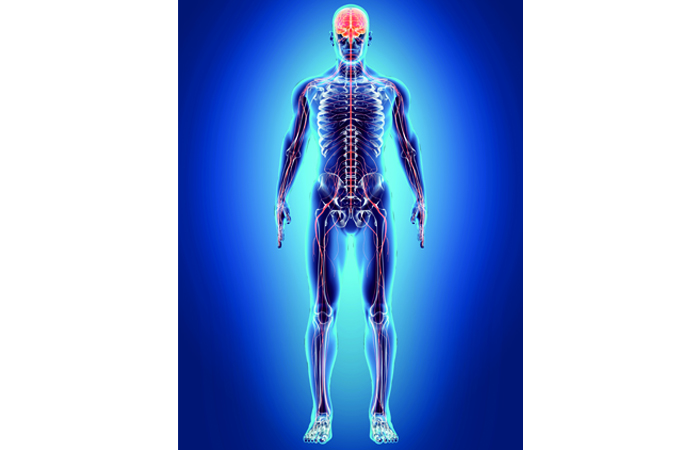The brain is arguably the most complicated organ of the body, and it sits within the incredibly delicate and intricate nervous system, without which conscious actions and automatic functions simply would not happen. The nervous system is so complex that it is usually considered in two parts: central and peripheral.
The central nervous system (CNS) is comprised of the brain and the spinal cord. Both are made up of nerve cells, known as neurons, which carry electrical impulses; glial cells, which support and protect neurons; and a rich blood supply. Because the structures are very delicate, they are protected by a series of thin membranes called the meninges, cushioned by cerebrospinal fluid, and encased in bone – the skull surrounding the brain, and the vertebrae of the spine surrounding the spinal cord.
The blood vessels that supply the brain are lined with a single layer of tightly packed cells. This blood-brain barrier means that not all substances can pass through easily. Those that are fat soluble can, but water soluble compounds generally can’t. This is why some medicines in a drug class cause drowsiness while others don’t, for example chlorphenamine and loratadine are both antihistamines but the former can cause users to feel sleepy while the latter is non-sedating.

